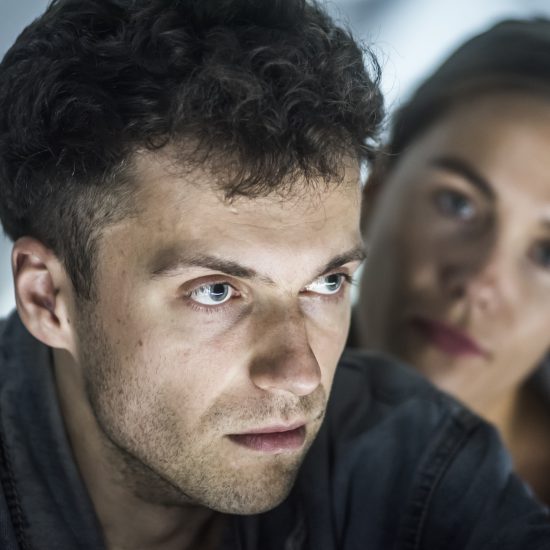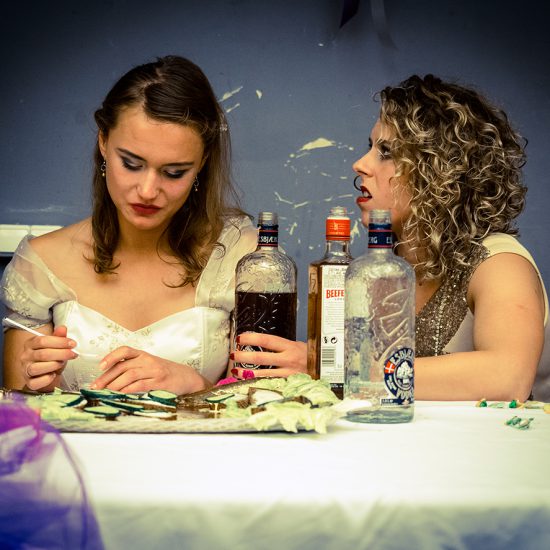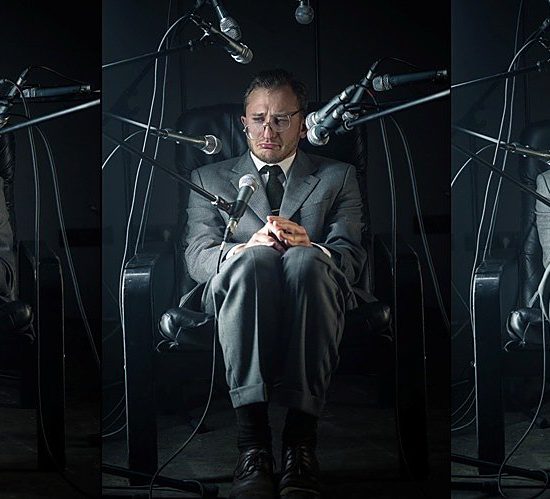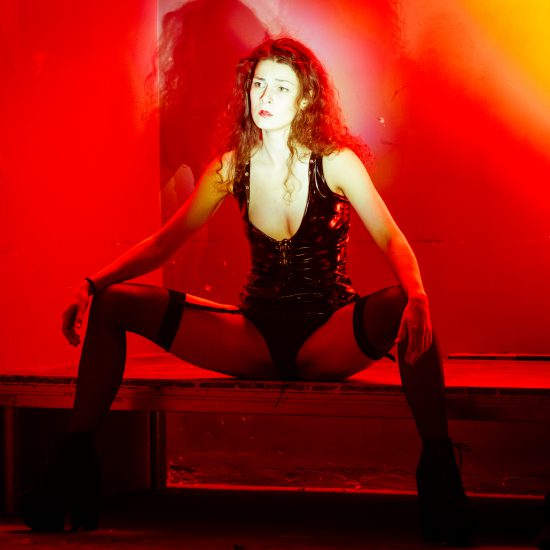The anti-form of new forms
Koršunovas began the 15th season of his theatre with The Seagull by Anton Chekhov. The director himself motivates this choice by his previous performances (Hamlet and The Lower Depths), and the themes they developed. The OKT platform becoming a kind of laboratory that brings the viewer back to the basics of acting and watching, The Seagull is truly wonderful material. It is not by coincidence that the director has retained almost all of Chekhov’s text, and the new translation by Sigitas Parulskis, contrary to all expectations, is as close to the original as it can be.
Nonetheless, is it even possible to wring out of the play something that would make us forget the text we almost know by heart and the most sophisticated interpretations we have seen or not seen? After all, The Seagull is similar to Hamlet – not only are both plays often compared by theorists, but sooner or later they end up in the hands of one and the same director. As far as the most outstanding performances of the last decade, in which Treplev’s “we need new forms” is equivalent to Hamlet’s “to be or not to be”, are concerned, they lack the undertones of the Chekhovian atmosphere, melancholy, or emotions. The Seagull is good for starting or crowning a theatre company’s life, it is good for the rebellion of the young or benefit performances of the senior; it is also suitable for diagnosing and solving the problems of the generation gap, not to speak of such topics as creation, talent, love, and spiritual helplessness, typical of relationships between people inside the family as well as theatre. Therefore, the range of Seagull’s modern interpretations is very wide.
[…]
The first performances of The Seagull directed by Koršunovas caused great admiration. The performance presented at the Lithuanian program of the “Sirenos” festival became noticed by the international audience. At first sight it seems paradoxical, but Koršunovas’ Seagull captivates not with its sophisticated form or wealth of information, but with everything that’s not there. There is no “magic lake”, although Treplev turns on the projector for his performance and Nina reads the monologue with water rippling in the background; there is no Treplev’s “little theatre”, although the audience sits before the actors ready for careful viewing of Treplev’s performance. There is no estate or meadow, no bored intellectuals, competing for youth or love of male or female artists.
In the small experimental space of the OKT hall, which can accommodate only a few tens of viewers, the actors and the audience find themselves sharing the same space of theatre, play, and life. The conditional line between the viewers and the actors, who get up from their seats and engage in one or another episode, creates a sort of mirror effect – it seems that we are looking not at Chekhov’s characters, but at ourselves in similar situations, which are magnified and abstracted to a point where they get transformed into dramas or jokes. One could even say that being so attentive to Chekhov’s text, the director shapes it as a truly modern play – without implications and omissions, the text and the situations become dynamic, while the actors’ charm and the reality of their scenic existence become more important than creation of imaginary roles. In this respect, what matters more is the paradox, stemming from the way the actors identify or contrast with their roles, and the energy, the dramatic or emotional stress with which they fill the empty carcasses of their roles, rather than the traditional approach to the roles or the episodes’ visual solutions.
Of course, the effect of the actor’s “freedom” would be different if we were talking about some other author’s play, but in Chekhov’s case what makes the play “click” is not only the characters’ emotions erupting in front of the audience, but also the fact that these precise emotions are characteristic of today’s man. Sometimes intense and cruel, sometimes frivolous and irresponsible, these relationships and feelings seem to fill not only the world of the characters of The Seagull, but that of the actors as well, and, when zoomed in and magnified, it loses all of its romantic charm. Here everyone – the artists and those around them – has to pay a price: to sacrifice love and dreams, give up the joys of family life, to be humiliated, to betray and be betrayed, to lose hope or get into an inevitable dead-end. The Chekhovian themes are approached naturally as we, the audience, observe the world on the stage and the actors – their colleagues laying out the cards of their characters’ lives and destinies. In this regard, The Seagull is truly timeless – as long as there is at least one artist, he or she will have to overcome their ups and downs, their flights and crashes, and survive them, or not. The dramatic threads of Koršunovas’ Seagull join together in Treplev’s character – Nedzinskas’ Kostya is too dependent not only on his strong and talented mother and equally strong Nina, but also on his heart yarning for love and support not to press the trigger at that fateful moment. By the way, if this Seagull lacks anything, it lacks love: it has admiration, sacrifice, worship, and even persecution, but not love. Treplev’s first and last play, imagined as a flight of a white seagull, was born out of love, yet it got disrupted by his mother. So, it wasn’t long before he shot a paper – fictitious, imagined and adored – seagull.
At the beginning of the performance Treplev says his famous phrase: “We need new forms, and if we can’t have them, we had better have nothing.” It seems that this time for Koršunovas the second half is more important. Of course, this does not mean that the performance does not have a clear and motivated form. Quite the contrary. The Seagull’s flexible and laconic anti-form only distils the director’s thought. His play is not about the new and old forms, old and new theatre, or the gap between the old and the young, it is about creative work as walking on a blade and belief that for someone who has lost his faith and hope, this blade can be fatal. One of the brightest and strongest scenes of the play – when Arkadina wins Trigorin (Darius Gumauskas) back without a vestige of theatricality or pretence. She struggles for the last straw of hope, imploring, and clinging to him like to dear life, knowing full well that Trigorin needs that straw too.
The intonation changes in the second part of the play. A table and a sofa appear, and the action slows down, gaining the rhythm of boring daily life. The director does not abridge the text. One could even say that he scrupulously continues it, turning the last scenes of the play into an epilogue of all the characters’ fates. Kostya and Nina’s last meeting – fruitless and full of anxiety, realizing how deep is the abyss between them and how quickly Kostya’s losing his belief. When an explosion is heard behind the curtain after Kostya’s ear-splitting scream, tears and begging, there is no need for Dr. Dorn to report Kostya’s suicide. He simply says: “a flask of ether has exploded”.
****
Rasa Vasinauskaitė, 7 meno dienos, 11th October 2013



